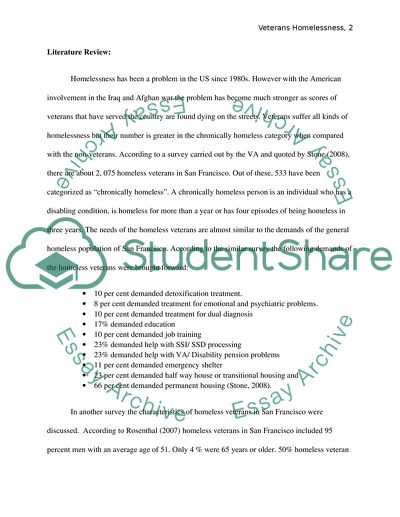Cite this document
(Veterans Homelessness Case Study Example | Topics and Well Written Essays - 2250 words, n.d.)
Veterans Homelessness Case Study Example | Topics and Well Written Essays - 2250 words. Retrieved from https://studentshare.org/social-science/1589691-love-veterans-homelessness
Veterans Homelessness Case Study Example | Topics and Well Written Essays - 2250 words. Retrieved from https://studentshare.org/social-science/1589691-love-veterans-homelessness
(Veterans Homelessness Case Study Example | Topics and Well Written Essays - 2250 Words)
Veterans Homelessness Case Study Example | Topics and Well Written Essays - 2250 Words. https://studentshare.org/social-science/1589691-love-veterans-homelessness.
Veterans Homelessness Case Study Example | Topics and Well Written Essays - 2250 Words. https://studentshare.org/social-science/1589691-love-veterans-homelessness.
“Veterans Homelessness Case Study Example | Topics and Well Written Essays - 2250 Words”. https://studentshare.org/social-science/1589691-love-veterans-homelessness.


